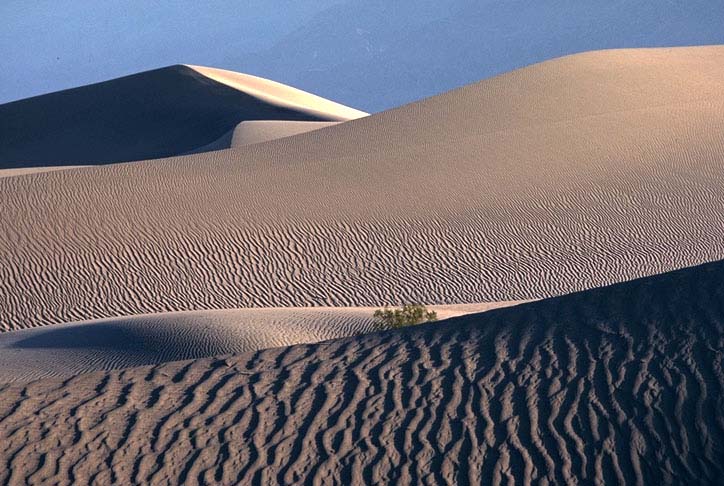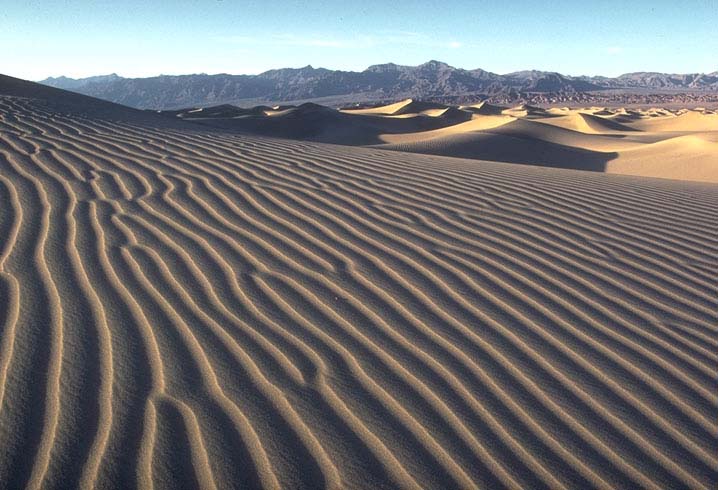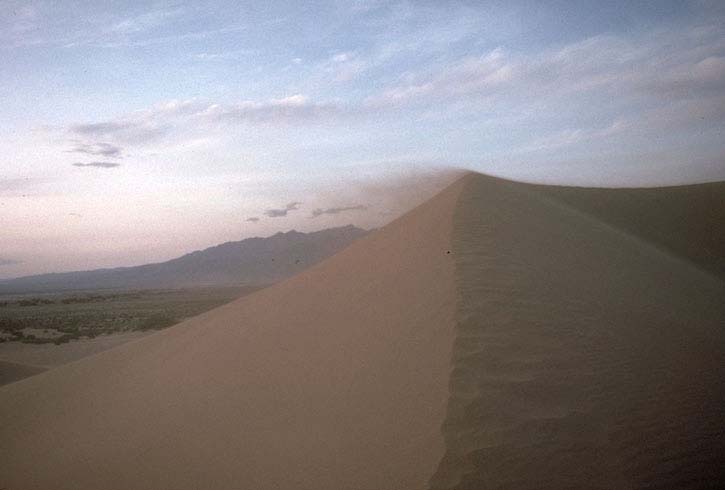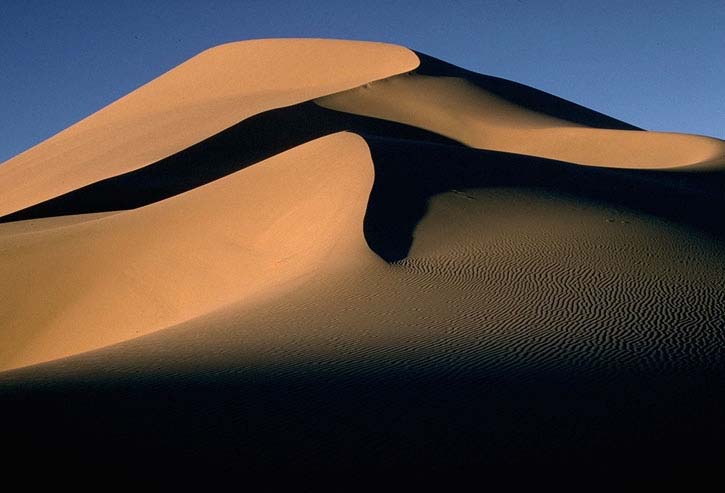
Mesquite Flats sand dunes, Death Valley, California.

Mesquite Flats sand dunes, Death Valley, California.
In order to form, sand dunes need a steady supply of sand, wind, and a wind break--so the sand can get deposited. Most sand dune fields in the western United States are generally quite small and exist next to alluvial fans or playas. However, during the Jurassic Period, vast sand seas covered much of what is now Utah, southern Nevada, western Colorado, and southern Wyoming--we know this because the Navajo Sandstone and its equivalents covers these regions.
Sand dune (eolian) deposits typically consist of very fine-grained sandstone (the grain size has to be small enough to be transported by the wind) that exhibits large-scale cross-bedding. Click here for a photo of eolian cross-beds.
More photos and information about sand dunes (in Death Valley).
**********
A few more sand dune photos...

Dunes and Ripples; Mesquite Flat, Death Valley, CA |

Dunes and Ripples, Mesquite Flat, Death Valley, CA. |

Eureka Sand Dunes, California |

Sand blowing off crest of dune. |

Great Sand Dunes National Monument, Colorado |

Ibex Dunes, California |
Back to depositional environments.
Back to sedimentary rocks--features.